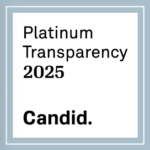FDA Commissioner Marty Makary has announced his intention to create a new pathway for drugs that treat ultrarare conditions.
“We’re going to be rolling out a new pathway for drugs, which is a pathway based on a plausible mechanism,” Makary said in an interview Thursday with The Megyn Kelly Show.
“If there’s a rare condition or a condition that’s incurable that affects a small number of people, we may be approving drugs based on a plausible mechanism, on sort of a conditional basis.”
Explaining how the pathway will work, he cited the example of a new treatment for a condition that affects 75 people worldwide. If the treatment “makes sense physiologically, the mechanism is scientifically plausible,” it could be eligible for the pathway.
“No one’s forcing these medications on these individuals if they want to try these new medications, even though we don’t have a randomized-controlled trial,” Makary said. “Because it’s not feasible, we will allow that, and at the same time, monitor everybody who gets it so that we can make inferences as soon as the data speaks.”
Makary did not provide details about the pathway.
His remarks are consistent with recommendations from some rare disease advocates.
“While our community has seen many therapeutic advances in recent years, there exist thousands of patient communities for whom those advances remain out of reach” because “scientific discoveries exist, yet regulatory frameworks do not,” Annie Kennedy, chief of policy, advocacy and patient engagement at the EveryLife Foundation for Rare Diseases, told BioCentury Friday.
Kennedy expressed support for “creating a framework for smaller patient populations, that will enable tailored solutions that address the unique challenges they face, particularly generating the evidence needed to meet regulatory standards for demonstrating safety and efficacy for each specific patient community.”
Legislation or administrative action
“The devil will be in the details, but this sounds very promising as a way to enhance the rare disease innovation framework established by the Orphan Drug Act,” Paul Kim, principal at Kendall Square Policy Strategies, told BioCentury.
Kim is an adviser to the National Organization for Rare Disorders (NORD) and a member of the Friends of Cancer Research board of directors.
Rare disease advocates are divided over whether FDA should independently establish new regulatory standards for reviewing drugs for ultrarare diseases or whether congressional legislation is necessary.
“We’re going to be rolling out a new pathway for drugs, which is a pathway based on a plausible mechanism.”
Marty Makary, FDA
Makary’s announcement that the agency will be “rolling out” a new pathway suggests he favors administrative action rather than a legislative mandate.
Former Acting FDA Commissioner Janet Woodcock has advocated for congressional legislation. She contends that a legislative mandate is necessary to ensure FDA consistently applies clear standards when evaluating drugs for ultrarare conditions, particularly when traditional randomized-controlled trials aren’t feasible.
Bright lines, Woodcock and other advocates for a legislated pathway argue, would unlock investment in ultrarare diseases, make regulatory decisions less contentious, and ensure that the bar remains high for drugs that can be evaluated using traditional methods.
Advocates for ultrarare legislation, including Emil Kakkis, president and CEO of Ultragenyx Pharmaceutical Inc. (NASDAQ:RARE), have been briefing congressional staff and posting information calling for legislation.
Kakkis told BioCentury Friday, however, that he is encouraged by Makary’s remarks, that he believes FDA can and should act on its own, and that it may not be necessary to create a new pathway for medicines to treat ultrarare medicines.
“A whole new pathway will require legislation that could take much more time,” Kakkis said. “Right now the FDA could use its existing authority to more readily accept disease-cause biomarker type endpoints based on solid science, and allow products to get approved via the accelerated approval pathway with an already existing mechanism for confirmatory studies. This is a step forward Makary and FDA can make today.”
Kim contends that legislation isn’t needed and warns that involving Congress might open the door to “undesirable amendments,” such as unnecessary extensions of exclusivity or additional incentives.
He argues that the central issue is not a market failure that more incentives could fix, but rather the need for clear regulatory standards tailored to drug development programs unable to support large randomized-controlled trials.
Kim also suggests FDA should facilitate collaboration between academic researchers and commercial entities, providing technical assistance and manufacturing support for non-commercial, ultrarare disease drug development.
Clarity needed
Makary’s use of the terms “conditional approval” and “plausible mechanism” raises questions about whether he intended these as general, non-technical descriptions that viewers of Kelly’s program would understand, or as deliberate signals of new approval criteria.
The phrase “conditional approval” was central to discussions surrounding the Promising Pathway Act (PPA), legislation introduced in 2023 by then-Sen. Mike Braun (R-Ind.) and supported by the Make America Healthy Again (MAHA) movement.
The PPA sought to establish a pathway for drugs intended to treat serious or life-threatening conditions, allowing time-limited conditional approvals based on safety data and “promising early evidence of effectiveness.”
Advocacy groups were sharply divided: organizations such as I AM ALS strongly supported the PPA, while NORD vigorously opposed it, warning it would endanger patient safety and undermine incentives to conduct rigorous clinical trials.
FDA also strongly opposed the measure, cautioning Congress that under the PPA, many drugs later proven ineffective in Phase III trials could have been provisionally approved. PhRMA took a similar position.
The term “plausible mechanism” raises questions about the strength of evidence FDA would require to approve drugs for ultrarare conditions.
The most straightforward cases could be treatments for genetic diseases that seek to directly counter a loss or gain of function of a mutant protein.
However, in the context of comments from HHS Secretary Robert F. Kennedy Jr. castigating FDA for failing to approve alternative medicines, unless it is clearly defined, plausibility could be interpreted as a dramatic lowering of FDA’s efficacy standards.
Kakkis said Makary seems to be signaling that he is considering “right-sizing and right-designing of studies in the ultra-rare population,” policies that the Ultragenyx CEO believes could advance “treatments for the rarest of diseases, including potentially in N of 1 type scenarios.”
Kakkis added, however, that FDA must take care to “assure we still maintain the high standards for safety and efficacy in our products, scaled to the size of the population. High quality longer-term follow-up studies can be designed that are cost effective to verify clinical outcomes in the long run.”
https://www.biocentury.com/article/655680/fda-to-create-ultrarare-pathway-makary-says

